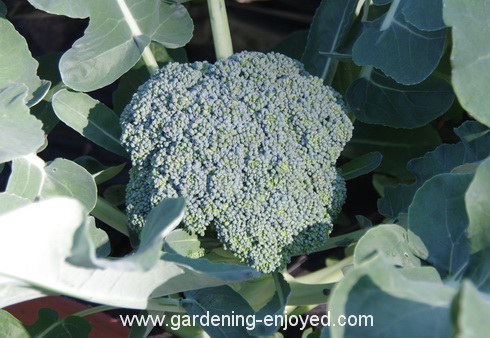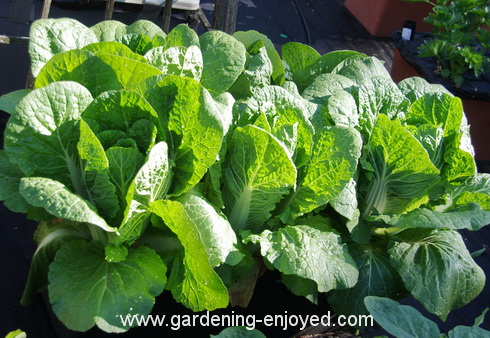
I allow a few Peonies to grow among my Iris and this is always my favourite. America is a single red variety that grows at the front of the garden next to the road where she does an excellent job of stopping traffic. This picture is taken a couple of days after a wild thunder storm and, as always, she is standing straight and tall with no supports. Many of the Peonies have been doing strange things this year. America is almost 30 cm shorter than usual and although there are just as many blooms, around 70 but who can count that high, but they are somewhat smaller than in other years. She has been in that spot for at least 15 years and seems to get a bit bigger every year. Other Peonies have had very erratic blooming and often with smaller blooms. We have had strange spring weather with a minimum of rain for the past several weeks. Many wet days but very
little accumulation and we had a very cold and late frost with a noticeable amount of snow on May 09. Mother Nature keeping us guessing yet again.

Tonight’s dinner. The veggie garden has kept our dinner plates overflowing for the past weeks and tonight this welcome newcomer will be added to the menu. It’s fun to walk the garden with people, always 2 m apart, and discover how many are unfamiliar with many of the Asian vegetables I grow to fill our plates early in the season. Everyone recognizes this head of Broccoli. There are just 4 of them in this Earthbox but they are probably big enough to last two meals. I always try to grow a variety that produces lots of side sprouts as well. After I cut this main head then, at each leaf axil, little heads will develop and we will continue to harvest them for a few more weeks.

All of my Swiss Chard leaves were looking like they were scorched by the sun or something and then when I noticed the same thing on this row of Beets and also on some Spinach, I decided to take a closer look. A little invader known as the Beet leaf miner Pegomyia betae is responsible. All three of those vegetables belong to the same family and apparently the miner enjoys all family members. The adult looks like a grey housefly and emerges from the overwintering pupa in the soil, in the spring to lay eggs on the desired leaves. The larva hatch in a week or so and tunnel their way into the leaves and happily eat all of the leaf except for the upper and lower skins. Picking off and destroying the leaves as soon as you see the first signs of attack is really the best defence. There can be more than one generation in a season but the first is usually the most damaging so planting a later crop can avoid much of the problem.

This is a very carefully taken picture of a portion of the front garden. A few years ago I gave up on grass for the paths between the beds and planted them with Creeping Thyme which was a great idea, particularly at this time of year when it blooms. It has been very durable but I discovered that it is not low maintenance. It was ignored last year when I couldn’t do much and some weeds moved in. That’s why this picture is so carefully taken because to the left and right of this section are a couple of wonderful native vegetation, (aka weeds) sections. The other problem is that it can be too successful. You will notice that it completely covers that little bed, growing over and around the Iris and other perennials. The upside to that is I can carefully remove it from there to be replanted where I am tearing out the weeds. Once established a little attention to the invaders when then are small and edging it like any other ground cover, keeps it looking great and I
don’t have to mow it.

This Chinese Cabbage or Napa is the most amazing vegetable. The speed at which it grows continues to amaze me and the size of the heads this, supposedly dwarf, variety produces is wonderful. I have been squeezing those heads every few days and now they are quite firm and ready for the dinner table. I’m sure there are many ways to enjoy it. The top portion is quite leafy and works in a salad, the middle portion is firmer and makes a great cole slaw while the bottom portion has some heavy stalks that we chop into our vegetable stir fry. That’s three days times the six plants crowding that Earthbox and that allows us to enjoy it for close to three weeks.
To ask a question just “reply” to this ezine. Don’t forget to check the front page of the Website for frequent short ideas for current gardening activities.
Lynda Asks? Your gardens are looking magnificent ! I have hardly seen any red lily bugs on my oriental and trumpet lily plants here in Napanee, Ont. this spring. In fact, I have only had to kill 3, and I have been watching for them everyday. Have you had the same experience this year ?
Ken Answers! Yes, there have been noticeably fewer of those Red Lily beetles in my garden as well. I have probably found less than a dozen and only a few of their voracious larva so far. Weird weather can be a good thing.
Larke Asks? My ninebark has powdery mildew. What do I do?
Ken Answers! It doesn’t do that much damage but it is quite unsightly. If possible just cut out and destroy the affected parts. Spraying it with plain water or a mixture of one part milk to nine parts water will help to control it.
Shelly Advises! Saw your note re the
squash borer. Same problem here for years. Last year I purchased a pheromone trap from NIC and it worked wonders for weeks. It worked well even when the pheromone tab was used up, the yellow colour apparently attracts them to their demise as well.
I also saw the female clearwing (a daytime moth) laying her eggs, they are actually deposited on the underside of stems and leaves of the plants, not in the soil from my experience. They are deep burgandy red in colour, about the same size of a red lily beetle egg (your other fav pest) usually laid singlely and can be scraped off and destroyed which will also help with controlling population.
I've read in the past about your thoughts that this type of trap in theory lures all the wee beasties in the whole hood to the location, but using this trap last year I had the best yield and longest surviving zucchini plants versus any other summer. I just wanted to share as I really do think it was worth it.
Ken Answers!
Thanks Shelly, maybe I’ll give that a try.
Mary Asks? Before I learned that yellow iris were invasive, I dug one from a roadside and put it in my garden. I now have vases full of yellow iris and a large brown bag full of all the roots I have removed. My question... should I put them out for the curb side brown bag program, or how should I dispose of them? Never again... I hope I got them all!
Ken Answers! Most brown bag programs grind their material before composting so I think you could safely dispose of them that way. I keep a small bunch of them in my pond so that they cannot spread except by seed which has happened only once in the years that I’ve had them.
|





